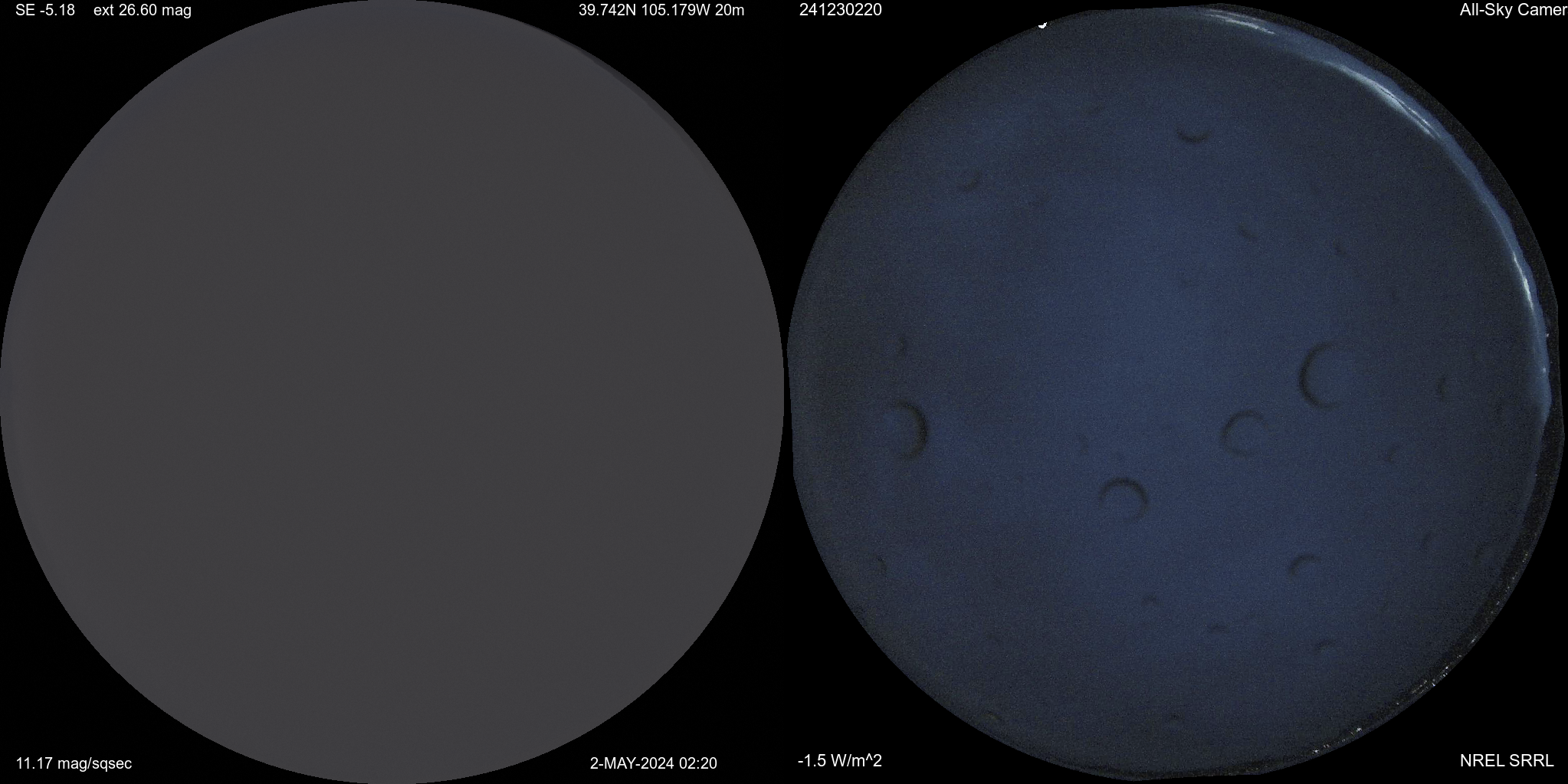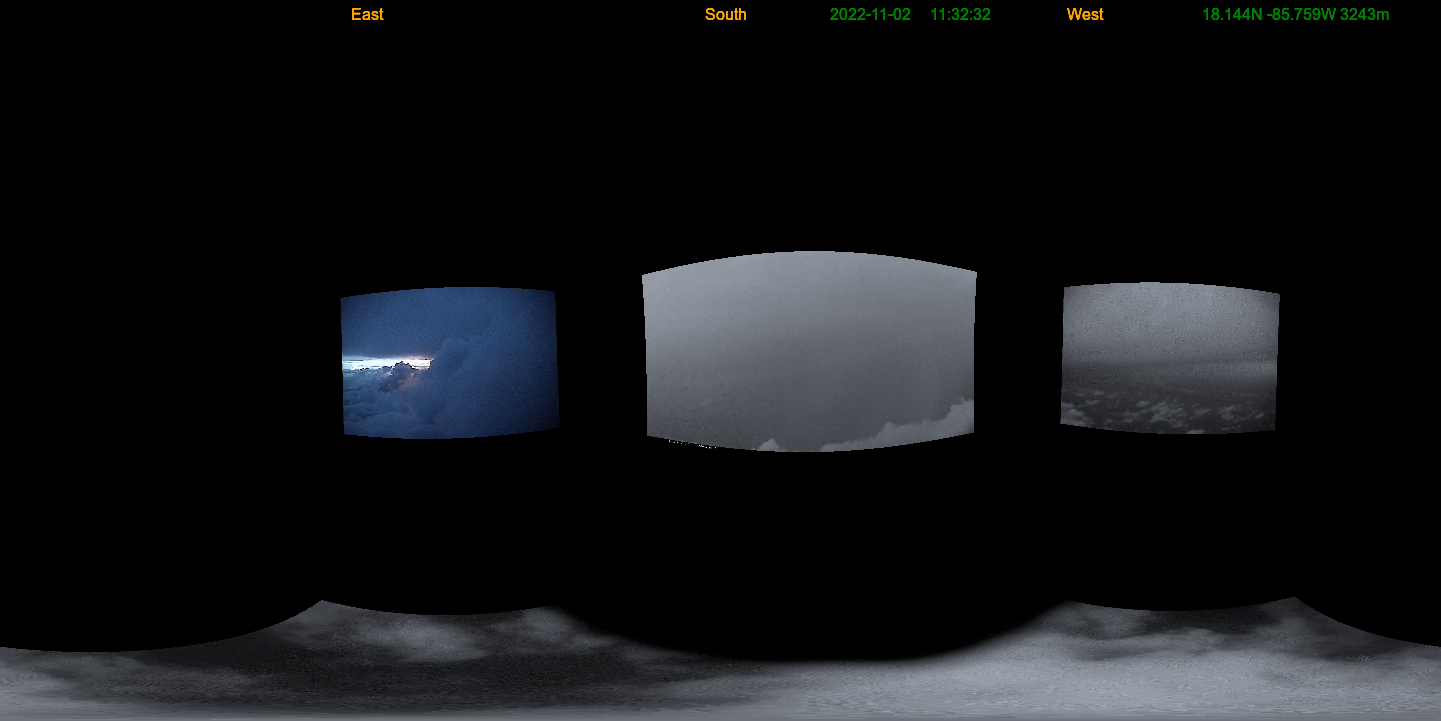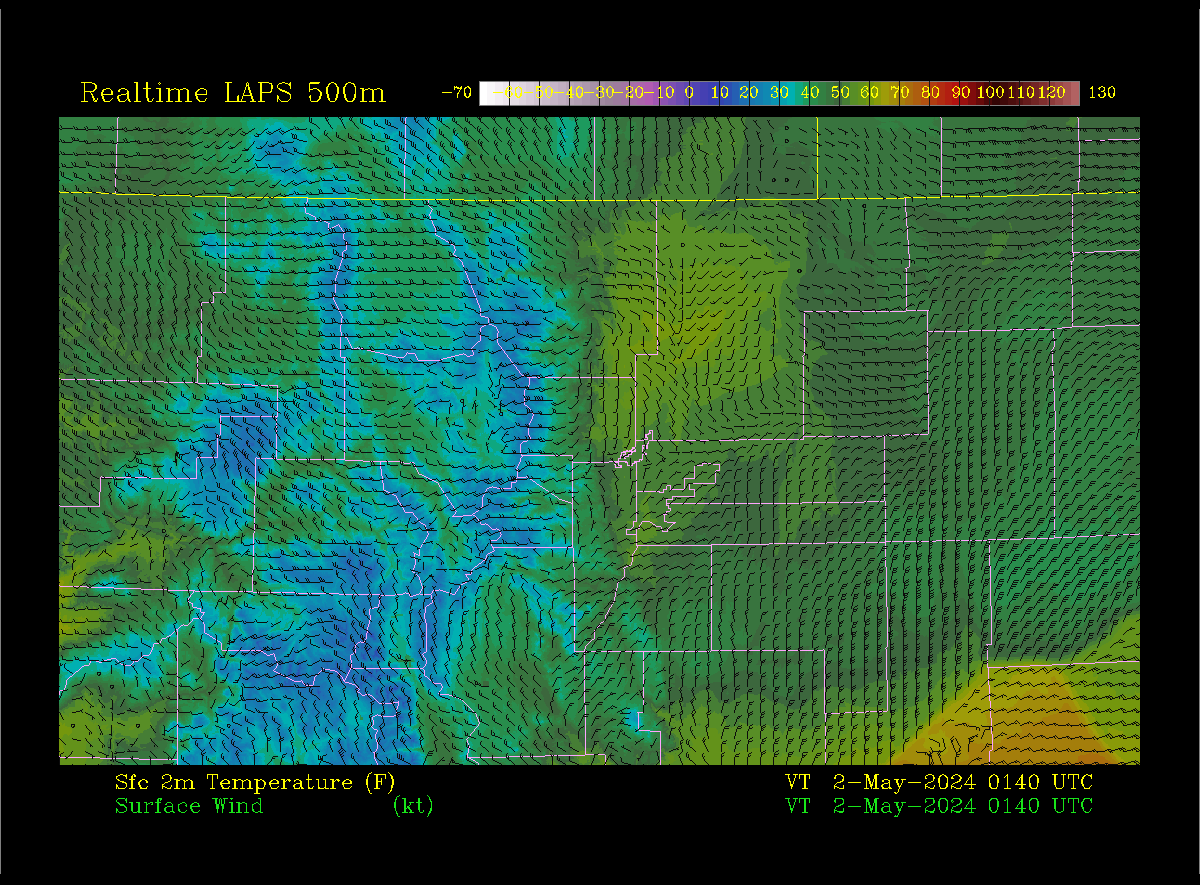The Simulated Weather Imagery (SWIm) package can be run to yield interesting (often remarkably close) comparisons between these analyses and simultaneous ground-based all-sky camera images. Both the cloud analysis and SWIm package are housed in the LAPS software distribution, though are modular enough to be used in other modeling systems.
SWIm Visualizations (real-time):

Aerosols and Visibility:

Hurricane Hunter Camera System

Aircraft camera mosaic video. This is an animation of about 2000 Hurricane Hunter aircraft frames of Hurricane Lisa. Each frame is a mosaic from 4 cameras projected into a 360 cylindrical projection. Here are
several flight segments
from the Nov 2nd morning flight for Lisa.
Geoengineering Sky Simulations
SWIm can be used to simulate the appearance of the sky with stratospheric aerosols potentially being introduced to compensate for greenhouse warming, referred to as as geoengineering. This is similar to what is seen following major volcanic eruptions such as El Chichon in the 1980s and Pinatubo in 1991.
Variational Cloud Analysis
There are plans to further improve the cloud analysis in a variational context, allowing Numerical Weather Prediciton (NWP) models to more accurately match high resolution features seen in reality.
This would entail a 4D variational analysis within an LES cloud model that directly uses visible and IR radiance information (e.g. with sub-kilometer resolution at a 1-minute cadence) solving for evolving 3-D cloud (and wind) fields. Observations from
ground based cameras,
also described in
this paper,
can be used along with satellites, and radars
to variationally constrain clouds by looking at multiply scattered light from different vantage points. Since the light scatters throughout the interior of the clouds,
the observed radiance provides information on the cloud optical and microphysical charasterics, such as optical thickness and liquid water content. A video explaining these concepts can be found on YouTube or in MP4 format (courtesy Israel Institute of Technology).
A python software package performing this type of tomographic analysis based on SHDOM can be found here,
described in this research article using airborne cameras. Here is a neural network version of the tomographic 3-D cloud retrieval.
This related satellite data assimilation discussion helps to summarize things.
References:
A. Aides, A. Levis, V. Holodovsky, Y. Y. Schechner, D. Althausen and A. Vainiger,
Distributed Sky Imaging Radiometry and Tomography,
2020 IEEE International Conference on Computational Photography (ICCP), 2020, pp. 1-12, doi: 10.1109/ICCP48838.2020.9105241.
[1]
Levis, A.; Schechner, Y.Y.; Davis, A.B.; Loveridge, J.
Multi-View Polarimetric Scattering Cloud Tomography and Retrieval of Droplet Size.
Remote Sens. 2020, 12, 2831. https://doi.org/10.3390/rs12172831
Kim, Jin-Young, Steve Albers, Purnendranath Sen, Hyun-Goo Kim, Keunhoon Kim, and Su-Jin Hwang. 2022.
The Impact of Assimilating Winds Observed during a Tropical Cyclone on a Forecasting Model
Atmosphere 13, no. 8: 1302




